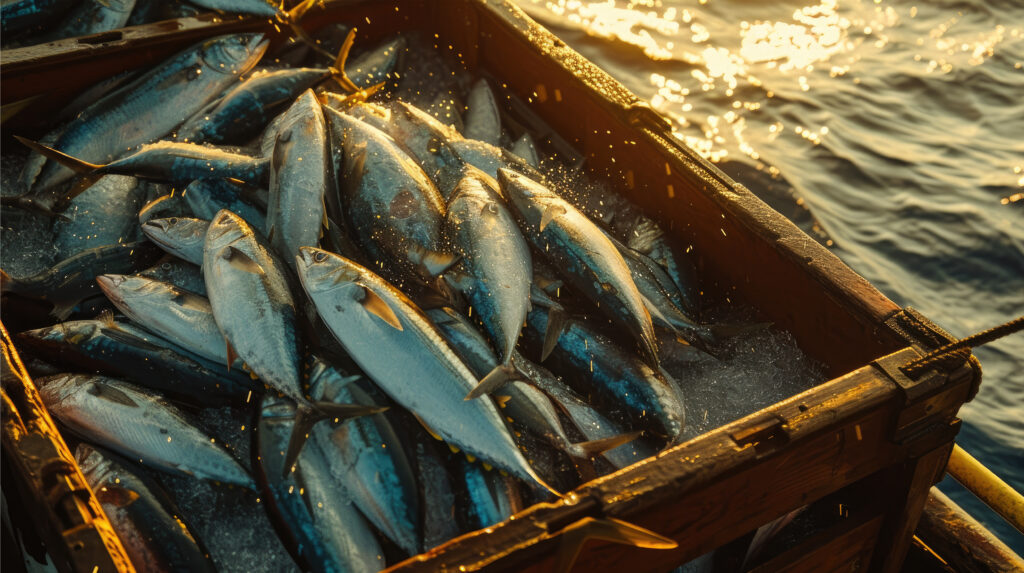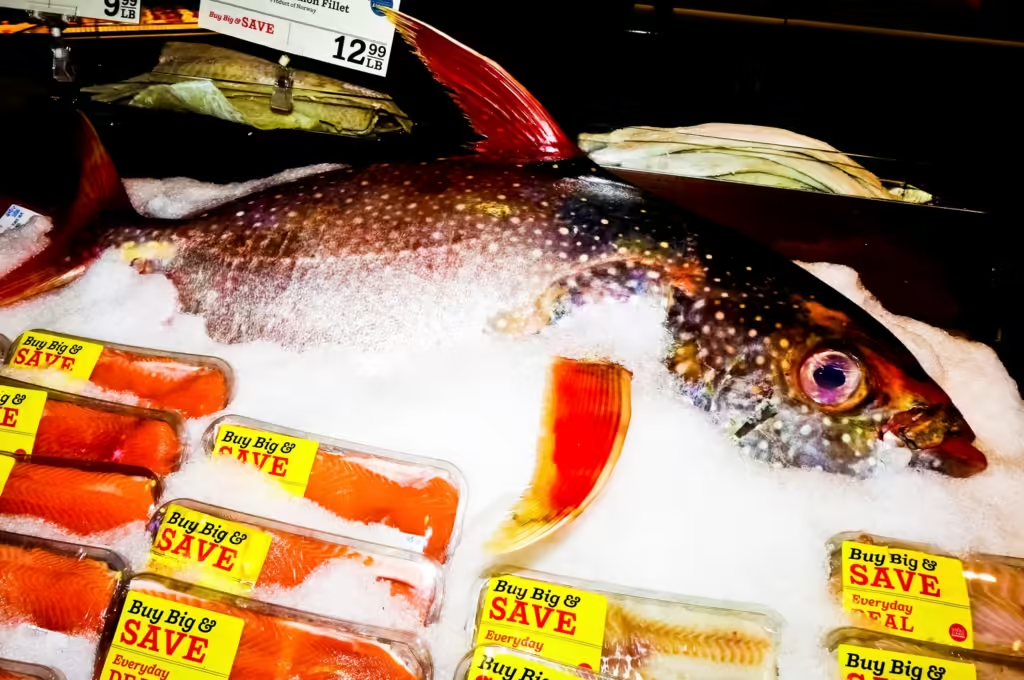
Seafood fraud is a slippery problem, but the solution might just be…nuclear? Scientists are turning to unexpected technology of isotope analysis to combat fish mislabeling, bringing new transparency to your dinner plate.
From mislabeled fish to hidden additives, deceptive practices are threatening livelihoods, food safety, and trust in what ends up on our plates. Seafood fraud ranges from substituting high-value species with cheaper alternatives to using unauthorized or undeclared additives. It can occur anywhere in the supply chain, especially as growing complexity makes monitoring and traceability harder.
Now, a new international initiative backed by the United Nations is using cutting-edge nuclear science to protect people and ensure the seafood they rely on is safe, authentic, and traceable.
The Seafood Fraud
Studies and investigations have found that various types of seafood fraud are committed along the supply chain. Fraud can stem from misunderstandings or lack of information. It can also involve deliberate deception or laundering of illegally harvested seafood.
- Seafood Substitution
It can be difficult to determine the species of a fish once it has been fileted and skinned. Some sellers take advantage of this and substitute a low-valued species for a more expensive one .For example, marketing catfish as grouper.
- Seafood Short-Weighting
Less known, but far more common, is short-weighting. This is when processors misrepresent the weight of a seafood product through practices such as overglazing, soaking, and breading.
Processors often add ice or preservatives to keep seafood fresh, which is a standard and legal practice. When processors overglaze seafood or add additives and count that weight in the net weight, it constitutes fraud.
Short-weighting charges consumers more for less seafood.
- Mislabeling Seafood
Sometimes other qualities of seafood are mislabeled in addition to the species name, such as the country of origin. This allows processors to avoid regulations and fees, or even to sneak illegally caught fish into the supply chain.
This can occur through:
- Transshipping, when seafood products are exported through different countries to avoid duties and tariffs
- At-sea transfers, when illegal fishing vessels transfer their catch to cargo vessels carrying legitimately caught seafood
- Falsifying trade documents
Mislabeling seafood and concealing illegally caught fish evades inspection fees, permits, and other business costs that affect the price of responsibly caught seafood.

The Problem of Seafood Fraud
seafood fraud can directly threaten human health.
Swapping one fish species for another with contaminants, toxins, or allergens can sicken people. Moreover, selling farmed fish as wild, or vice versa, can result in different and potentially higher health risks for consumers.
For instance, fish raised in aquaculture pens can carry antibiotics and dyes that would not be present in wild fish. In some cases, fraudulent seafood may contain higher levels of mercury or other toxins than the labeled product, posing risks, especially for vulnerable populations like pregnant women and children. Additionally, consuming mislabeled species that accumulate toxins like ciguatera can cause serious illness.
According to studies, research in the US has estimated millions of dollars in annual losses due to species substitution. As a result, widespread seafood fraud erodes consumer trust in the seafood industry as a whole.
Furthermore, fraudulent practices unfairly disadvantage honest businesses, who are unable to compete with lower prices offered by those engaged in fraud.
Finally, mislabeling can mask the sale of illegally caught seafood, thereby supporting unsustainable fishing practices and contributing to economic losses from illegal, unreported, and unregulated (IUU) fishing.
How Isotope Analysis Works in sea food fraud?
A joint project between the Food and Agriculture Organization (FAO) and the International Atomic Energy Agency (IAEA) is set to use nuclear technology to counter seafood fraud.
Through its Joint FAO/IAEA Centre of Nuclear Techniques in Food and Agriculture, the IAEA is launching a five-year coordinated research project to help countries strengthen food control systems to detect and prevent seafood fraud. The IAEA will use nuclear and related techniques to build scientific capacity, ensure product authenticity, and enhance resilience and transparency in seafood supply chains.
“This IAEA project provides Member States with a valuable opportunity to collaborate in combating fraud and de-risking the seafood supply chain using robust nuclear science-based tools,” said Debashish Mazumder from the Australian Nuclear Science and Technology Organization, a key partner of the IAEA on sustainable development issues.
The IAEA’s Food Safety and Control Laboratory supports countries in applying nuclear and related analytical techniques to facilitate trade in safe and authentic seafood, offering powerful tools for fraud detection.
One of the most effective methods to counter seafood fraud is stable isotope ratio analysis of light elements such as oxygen, which allows scientists to identify the geographical origin of fish and verify whether it was wild-caught by reflecting environmental and ecological conditions in the fish’s biological tissues.
Used to authenticate seafood, nuclear technology serves as a powerful tool to combat seafood fraud, enhance consumer protection, increase trust in food control systems, and support fisherfolk in managing aquatic resources sustainably.
Specific Applications of Nuclear Techniques
Nuclear and isotopic techniques offer powerful tools for combating seafood fraud by providing insights into a product’s species, origin, and age. These methods can be integrated with conventional approaches to strengthen food safety and authenticity decisions.
- Stable isotope ratio analysis (SIRA)
Different regions and ecosystems have distinct isotopic signatures. For instance, fish from the Baltic Sea might have a different isotopic composition due to its brackish water compared to Atlantic cod. Farmed fish often have different diets than wild-caught fish, leading to distinct isotopic profiles, allowing differentiation between them. SIRA can detect seafood adulteration with cheaper ingredients. It identifies differences in isotopic signatures, even when chemical structures are similar.
- Radiocarbon dating
Radiocarbon dating can be used to determine the age of fish by analyzing the content in otoliths, calcified structures in their inner ears. This can help verify age estimates for long-lived species, particularly deep-sea fish.
- Other relevant techniques
- Elemental Profiling (Trace Element Fingerprinting – TEF):
Trace elements reflect the environment where the seafood grew, making TEF useful for determining geographical origin. This method can be 100% accurate in identifying the harvesting location of certain species, according to Dialogue Earth. Combining TEF with stable isotope analysis can enhance the accuracy of origin assignment.
- Nuclear Magnetic Resonance (NMR) Spectroscopy:
Can differentiate species, detect additives, and uncover fraudulent practices like mislabeling frozen fish. Also useful for detecting adulteration in high-value products like spices, honey, and olive oil.
Challenges and Future Directions
Despite its potential, the widespread adoption of nuclear technology for combating seafood fraud faces several challenges. The cost of equipment and analysis can be prohibitive for some companies, and there is a need for standardized protocols and databases to ensure accurate and reliable results.
Regulatory frameworks are also needed to govern the use of this technology and protect consumer privacy. Furthermore, public perception and acceptance of nuclear technology may be a barrier to its widespread adoption.
Future research and development efforts should focus on reducing costs, improving accuracy, and addressing regulatory and public perception concerns.
It’s time for a sustainable sea-to-table revolution. Utilizing nuclear technology is the first step in building a safer, healthier, and more environmentally friendly food source for the future.
For more such informative articles stay tuned at The World Times.



